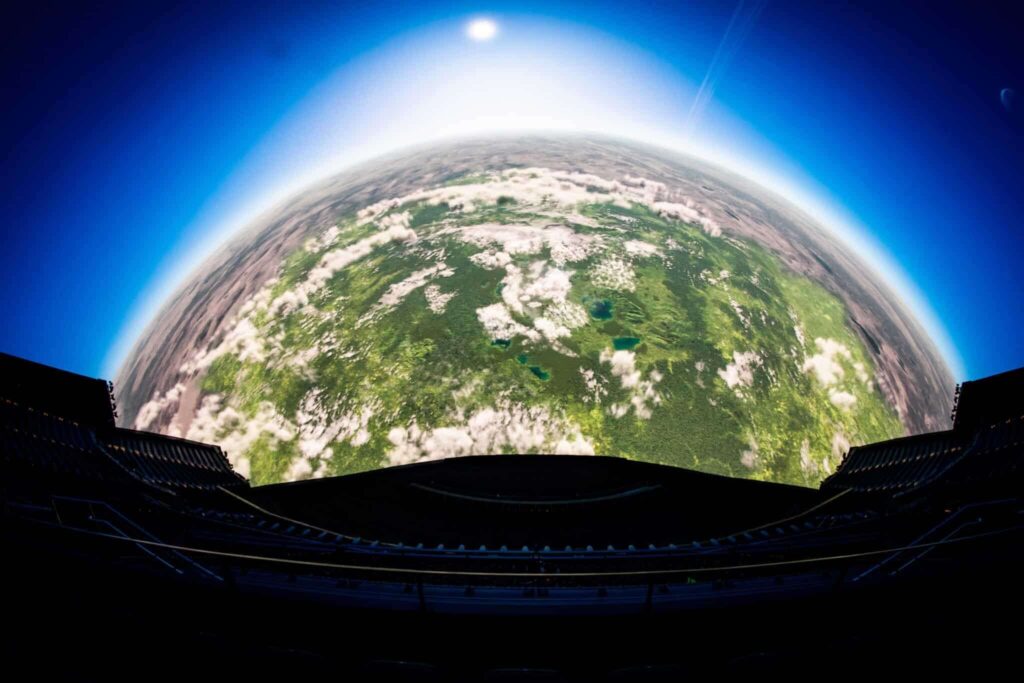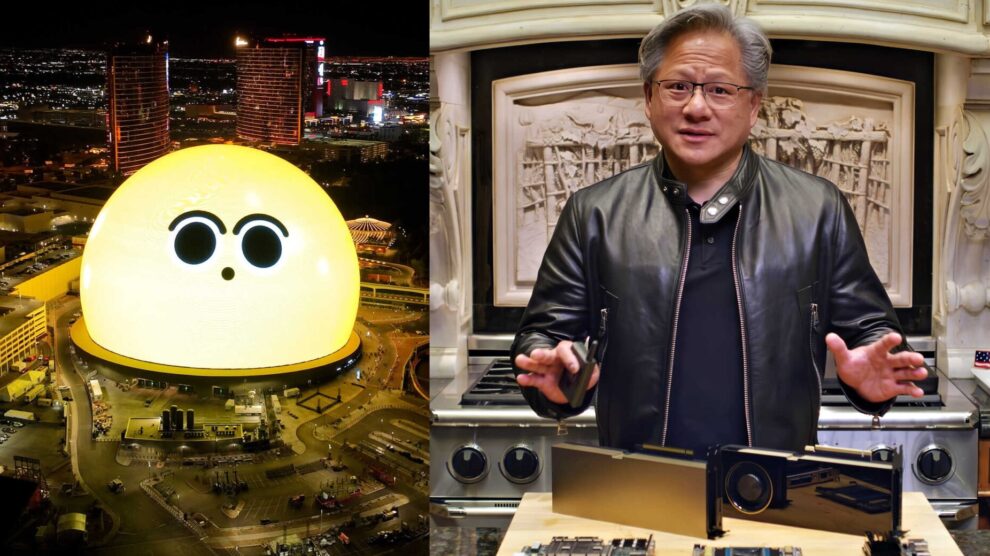
Breaking Down the Technology
The Power of 150 RTX A6000 GPUs
- Massive Parallel Processing: The RTX A6000 is one of Nvidia’s most powerful professional GPUs, designed for demanding visualization and AI workloads.
- Combined Performance: With 150 units working in tandem, the system likely has access to over 1.5 petaFLOPS of computing power.
- Memory Capacity: Each RTX A6000 has 48GB of VRAM, totaling over 7TB of high-speed graphics memory across the system.
16K Resolution in Three Layers
- Unprecedented Detail: 16K resolution provides 16 times the detail of 4K, allowing for incredibly sharp images even on massive displays.
- Multi-Layer Rendering: The three layers of 16K content likely allow for complex visual effects, depth, and interactivity.
- Real-time Compositing: This setup suggests advanced real-time compositing capabilities, enabling dynamic and responsive visuals.
60 FPS Performance
- Smooth Motion: Maintaining 60 frames per second at such high resolutions ensures smooth motion, crucial for immersive experiences.
- Technical Challenge: Achieving this frame rate at 16K resolution across multiple layers is a significant technical achievement.
Supporting Technologies
- Nvidia Rivermax: This software likely manages the complex data streaming required to coordinate visuals across the massive display.
- BlueField DPUs: Data Processing Units probably handle networking and synchronization tasks, offloading this work from the GPUs.
Implications and Potential Applications
Entertainment Industry
- Immersive Experiences: This technology could revolutionize concert venues, theme parks, and other entertainment spaces.
- Virtual Production: Similar setups could be used for advanced virtual production in film and television.
Advertising and Marketing
- Dynamic Outdoor Advertising: The exterior display showcases the potential for highly engaging and interactive outdoor advertisements.
- Brand Experiences: Companies could create immersive brand experiences using similar technology.
Data Visualization and Simulation
- Scientific Visualization: This level of visual fidelity could be applied to scientific simulations or data visualization projects.
- Urban Planning: City planners could use similar technology for immersive urban development visualizations.
Technical Challenges and Considerations
- Power Consumption: The energy requirements for running 150 high-end GPUs are likely substantial.
- Cooling Solutions: Maintaining optimal operating temperatures for so many GPUs requires advanced cooling systems.
- Synchronization: Ensuring perfect synchronization across all GPUs and display panels is a significant technical challenge.
- Content Creation: Producing content at 16K resolution requires specialized equipment and workflows.
The Future of Large-Scale Displays
The Las Vegas Sphere points to several potential trends in display technology:
- Increasing Resolution: As GPUs become more powerful, we may see even higher resolution displays in the future.
- Interactive Environments: Future installations might incorporate more interactive elements, responding to audience movement or input.
- AI Integration: AI could be used to generate or modify content in real-time, creating more dynamic experiences.
- Sustainable Solutions: Future iterations may focus on achieving similar results with more energy-efficient hardware.
Conclusion: A Glimpse into the Future of Visual Experiences
The Las Vegas Sphere, powered by its array of 150 Nvidia RTX A6000 GPUs, represents a landmark achievement in visual technology. It demonstrates the potential of modern GPUs to create immersive, high-resolution experiences on a massive scale. This installation not only pushes the boundaries of what’s possible with current technology but also hints at the future of entertainment, advertising, and public spaces.
As GPU technology continues to advance, we can expect to see more installations pushing the limits of visual fidelity and immersion. The Las Vegas Sphere serves as both a technological showcase and a blueprint for future large-scale display projects. It challenges us to reimagine the possibilities of visual experiences and sets a new benchmark for what can be achieved when cutting-edge technology is applied to entertainment and public spectacle.
While the power and scale of this installation may be beyond the reach of most applications, it provides valuable insights into the direction of display technology and the growing importance of powerful GPUs in creating next-generation visual experiences.










Add Comment